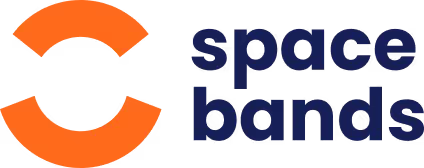
spacebands is a multi-sensor wearable that monitors external, environmental hazards, anticipates potential accidents, and gives real-time data on stress in hazardous environments.
Sign up to the mailing list:
Subscribe


Hand Arm Vibration Syndrome (HAVS) is a debilitating condition that affects thousands of workers across various industries.
While often associated with construction, its impact extends far beyond, reaching into manufacturing and agriculture. These sectors, reliant on machinery and tools that generate vibration, are particularly vulnerable to HAVS.
This blog delves into the challenges faced by workers in these industries, exploring the symptoms, causes, and prevention strategies for this often-overlooked occupational hazard.

Construction is a high-risk industry for developing Hand Arm Vibration Syndrome (HAVS). The constant use of power tools exposes workers to harmful vibrations that can damage the blood vessels and nerves in the hands and arms.
Common construction tools linked to HAVS:
The impact of HAVS on construction workers can be severe:
The consequences of HAVS extend beyond the individual worker. The condition can lead to:
Addressing HAVS is crucial for the health and well-being of construction workers, as well as for the overall success of construction projects.
In the next section, we will explore strategies to prevent HAVS in the manufacturing industry.

he manufacturing industry is another sector at high risk for Hand Arm Vibration Syndrome (HAVS). The repetitive use of power tools and machinery, coupled with exposure to vibration, creates a perfect storm for the development of this debilitating condition.
Common manufacturing processes linked to HAVS:
The impact of HAVS on manufacturing workers can be significant:
Like construction, the manufacturing industry faces the challenge of balancing productivity with worker safety. Implementing effective HAVS prevention measures is essential to protect the health and well-being of employees while maintaining operational efficiency.
In the next section, we will explore the specific challenges of HAVS in agriculture.
.jpeg)
Agriculture is another sector significantly impacted by Hand Arm Vibration Syndrome (HAVS). The use of power tools and machinery in farming operations exposes workers to high levels of vibration.
Common agricultural tasks linked to HAVS:
The impact of HAVS on agricultural workers:
The outdoor working environment, often involving cold and damp conditions, can exacerbate the effects of HAVS. Additionally, the isolation of many agricultural workers can delay diagnosis and access to appropriate support.
In the next section, we will explore general prevention strategies that can be applied across all three industries.

Preventing Hand Arm Vibration Syndrome (HAVS) requires a multifaceted approach encompassing both employer and employee responsibilities. While the specific challenges vary across industries, several general prevention strategies can be applied to construction, manufacturing, and agriculture.
Key prevention measures include:
By implementing these measures, employers can create a safer working environment and reduce the risk of HAVS for their employees. It is essential to remember that prevention is always more effective and cost-efficient than treating the condition.
spacebands are designed with HAVS prevention in mind. Our safety wearables alert users when they exceed the set vibration threshold, or when they have been exposed to vibration for too long. Data from the wearable is then synced to the analytics dashboard - allowing Health & Safety Managers to see what vibration levels workers are being exposed to.
In the following section, we will discuss the importance of early detection and the role of vibration white finger in assessing HAVS progression.

Hand Arm Vibration Syndrome (HAVS) is a serious occupational health condition with far-reaching consequences for workers in construction, manufacturing, and agriculture. Prolonged exposure to vibration from tools and machinery can lead to debilitating symptoms, impacting both physical and mental well-being.
To effectively combat HAVS, a collaborative effort is required involving employers, employees, and policymakers. By implementing prevention measures, such as regular equipment maintenance, work rotation, and protective equipment, it is possible to significantly reduce the risk of developing this condition. Early detection and intervention are also crucial for managing HAVS and preventing further deterioration.
We've covered HAVS compensation payouts in another blog, head on over if that tickles your fancy.
We think you'll also find the articles below really useful
Join 5,000 H&S professionals and sign up for the spacebands monthly newsletter and get the latest blogs, free resources, tools, widgets and a dose of health & safety humour.

spacebands is a multi-sensor wearable that monitors external, environmental hazards, anticipates potential accidents, and gives real-time data on stress in hazardous environments.
